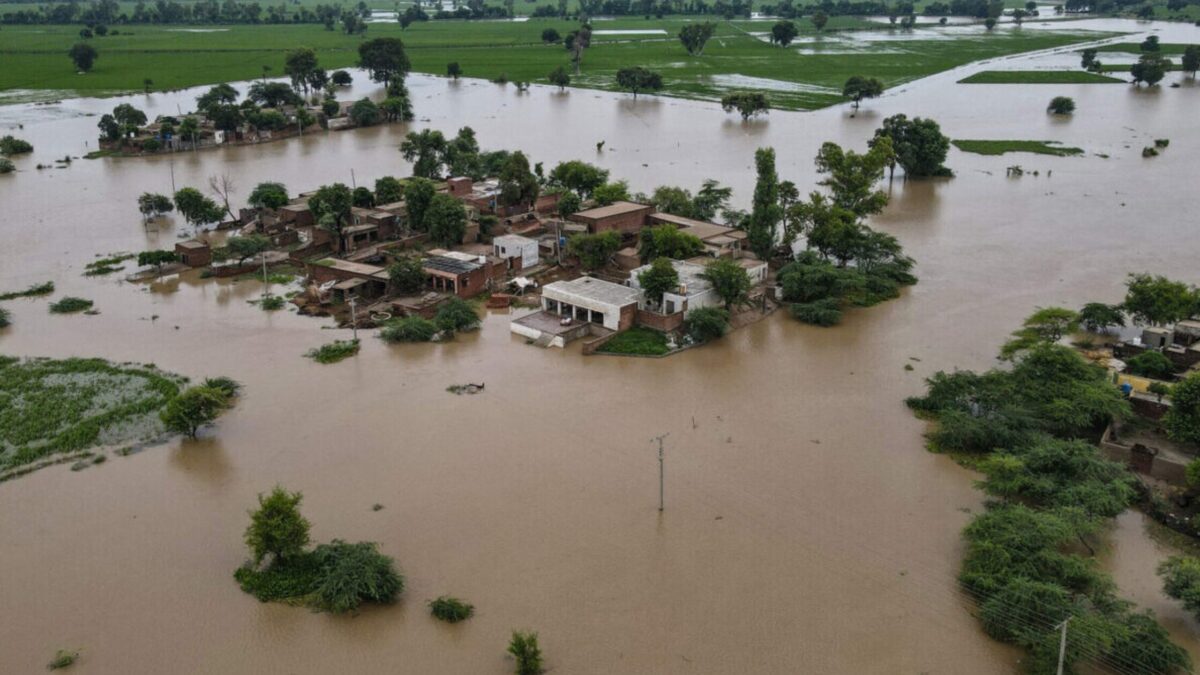GURDASPUR, Sept 16 — Once golden with promise, Punjab’s farmlands now lie bruised and broken—submerged under knee-deep water, littered with rotting paddy and decaying carcasses. What was supposed to be a season of harvest has turned into heartbreak for India’s most vital agricultural state.
Unprecedented monsoon rains have unleashed devastation across Punjab, sweeping through villages, swallowing crops, displacing families, and killing at least 52 people. Over 400,000 people have been affected. Farmlands the size of London and New York combined have been drowned under relentless floods, leaving behind the stench of loss and despair.
India’s Agriculture Minister, during a recent visit, said plainly, “The crops have been destroyed and ruined.” Punjab’s Chief Minister called it “one of the worst flood disasters in decades.”
For many, this catastrophe reopens scars from 1988—until now the benchmark of disaster in living memory.
“I’ve never seen anything like this since that flood,” said 70-year-old Balkar Singh from Shehzada village, his voice shaking as he pointed to cracks in his home and the swamp that used to be his field.
Flooding and landslides are no strangers to the Indian monsoon, but the scale and intensity of this disaster point toward a disturbing trend—climate change and reckless development are reshaping nature’s fury into something far more relentless.
In August alone, Punjab received almost 66% more rainfall than average, triggering chaos in areas like Gurdaspur and villages like Toor and Lassia, where water levels surged up to 10 feet within minutes, leaving residents scrambling to rooftops in the dead of night.
“We lost everything—our animals, our homes, even our hope,” said Surjan Lal, a farmhand who watched helplessly as his world vanished beneath floodwaters.
In Lassia, farmer Rakesh Kumar, who had leased extra land to expand his income, now sees nothing but financial ruin.
“All my investment is gone,” he said quietly. “And I don’t even know if I can sow wheat this year. First, the land must dry, then cleared of silt—if we’re lucky.”
For daily-wage laborers like Mandeep Kaur, the tragedy goes beyond economics. Her house was washed away. She now sleeps under a tarpaulin on wet earth, constantly on edge from slithering snakes and lurking uncertainty.
Punjab isn’t just another state hit by floods. It’s the backbone of India’s food security programme, feeding over 800 million people. While analysts say domestic food supplies will hold due to buffer stocks, exports—particularly premium basmati rice—are likely to take a hit.
“We’ll see a serious drop in basmati output,” said Avinash Kishore of the International Food Policy Research Institute. “That means higher prices, lower exports, and harder times ahead.”
To make matters worse, Punjab had opted out of the federal crop insurance scheme, citing its traditionally low-risk profile and well-established irrigation. Now, farmers must fend for themselves—with no safety net.
Prime Minister Modi has announced $180 million in relief. But for those living in tarp shelters, eating borrowed grains, and waiting for the mud to dry, that help feels far, far away.
“The water is still knee-deep on my farm,” said Balkar Singh. “I don’t know what the future holds.”
And here lies the true story—not just of floods and figures—but of people. Of resilience bruised but not broken. Of generations of farmers who fed a nation now staring at drowned dreams. Punjab needs more than aid. It needs urgent attention, long-term planning, and most of all, our collective empathy.
If we forget them, we forget the very hands that feed us.




